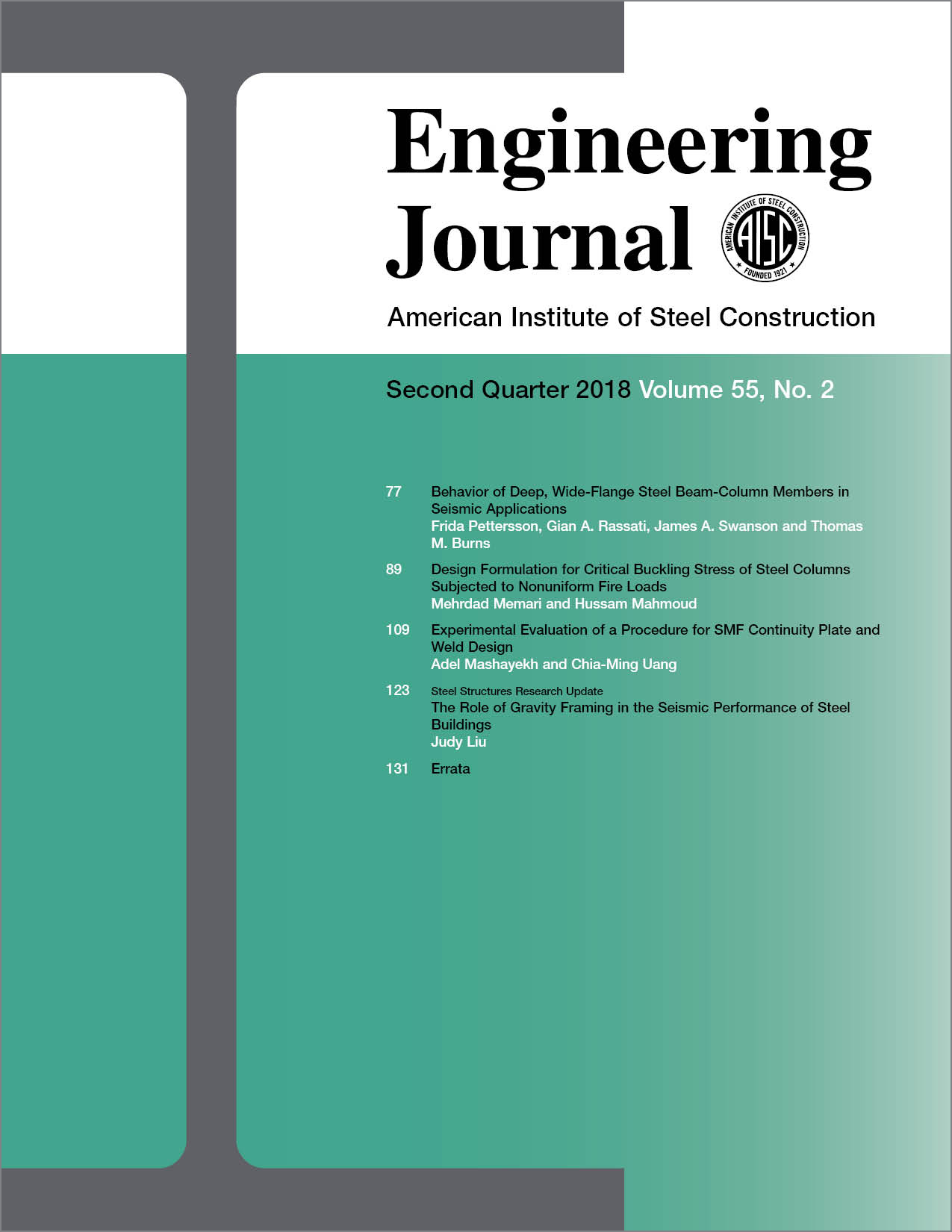Steel Structures Research Update: The Role of Gravity Framing in the Seismic Performance of Steel Buildings
DOI:
https://doi.org/10.62913/engj.v55i2.1132Abstract
Ongoing work on the seismic performance of steel buildings is highlighted. Dr. Michael Engelhardt leads the University of Texas at Austin team of Dr. Patricia Clayton, Dr. Todd Helwig, Dr. Eric Williamson, and Ph.D. student Sean Donahue. The research fills knowledge gaps with respect to the role of the gravity framing in the seismic response of steel buildings. Beam-to-column connections in gravity load-resisting frames are typically designed as “simple shear” or “pin” connections with no flexural strength or stiffness. However, these simple shear connections do have some flexural resistance. With consideration of these connections acting compositely with the floor slab, the flexural strength and stiffness increase. Given the number of gravity frame connections in a typical steel building, their overall contribution to the seismic response of the structure could be significant. However, the available data on cyclic behavior of simple shear connections are limited. The current research is expanding the database with a series of large-scale experiments and developing models and tools to quantify the role of the gravity framing in the seismic performance of steel buildings.

